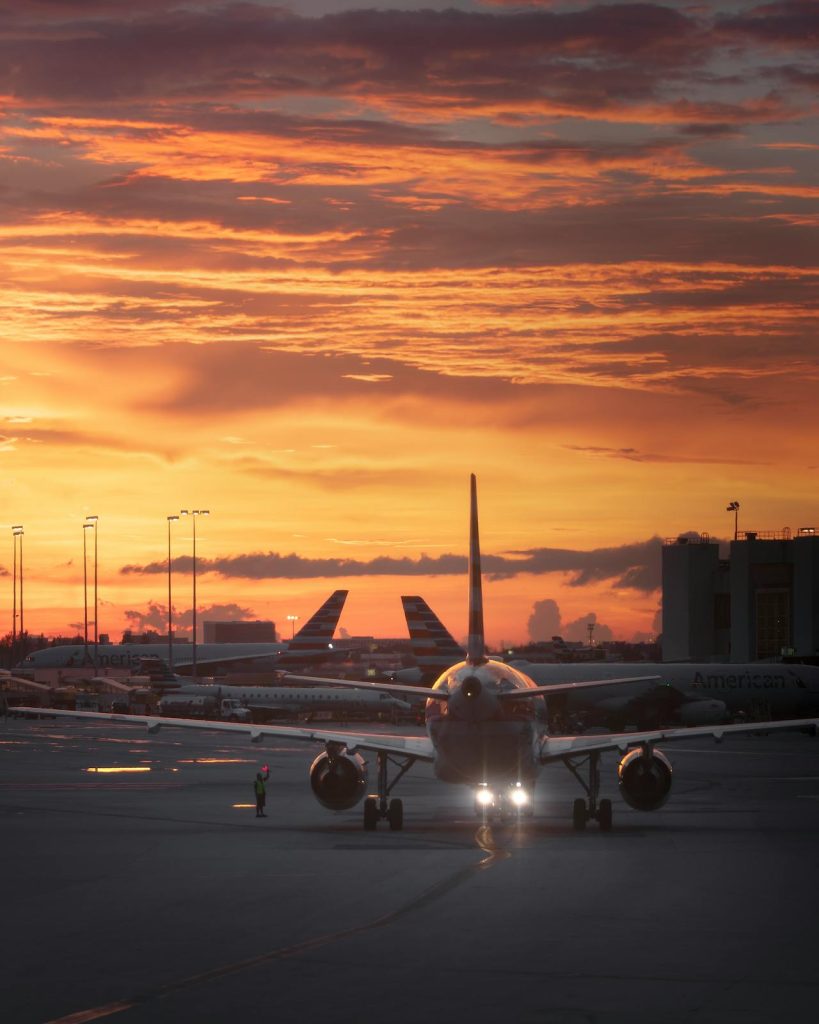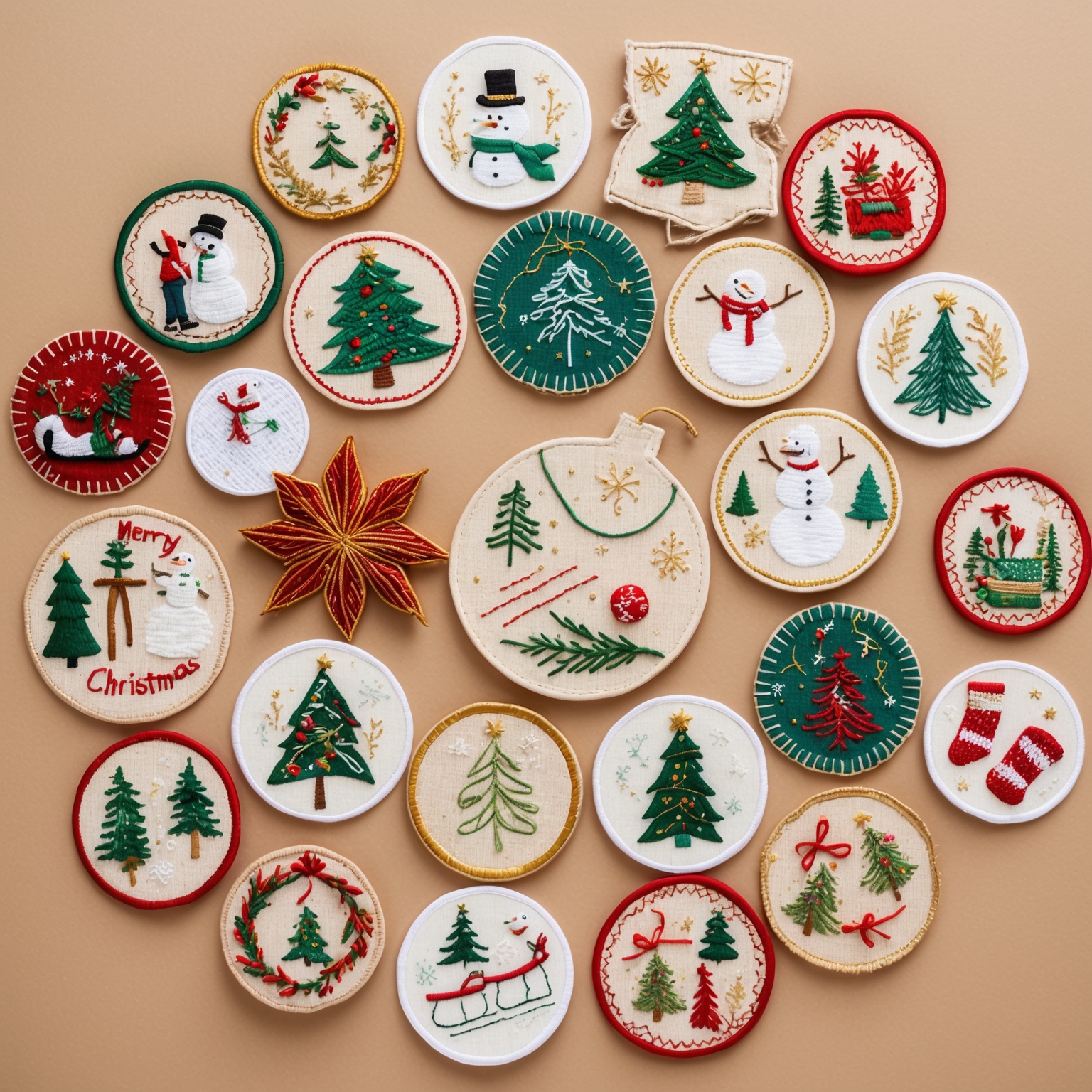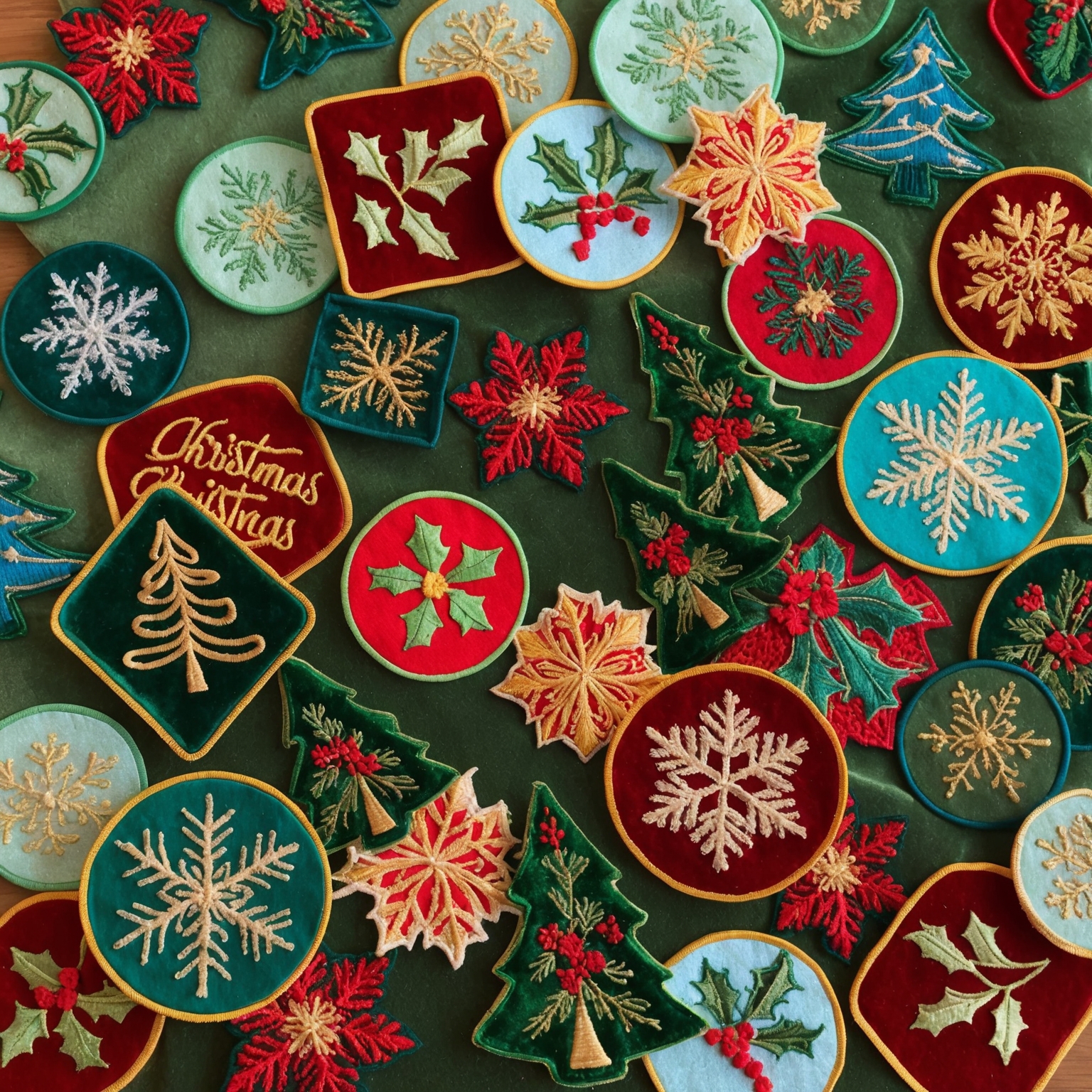Celebrating Achievements in Aviation
Aviation is a field marked by milestones and accomplishments, where every flight, certification, and mission carries significant importance. Custom patches serve as powerful symbols of these achievements, worn with pride by pilots, crew members, and aviation enthusiasts. These patches not only commemorate individual and team accomplishments but also foster a sense of identity and community within the aviation world.
In this article, we will explore the role of custom patches in marking aviation milestones, from their historical roots to their modern applications. We will delve into the design and significance of these patches, their impact on morale and recognition, and provide practical tips for creating and using them effectively. Whether you are an aviation professional, a patch collector, or an enthusiast, this comprehensive overview will offer valuable insights into the world of aviation milestone patches.
1. The Historical Roots of Aviation Patches
The Early Days of Flight
The tradition of using patches to mark aviation achievements dates back to the early days of flight. As aviation pioneers broke new ground and set records, patches became a way to commemorate their accomplishments and share their stories.
Example: Early aviators like Charles Lindbergh and Amelia Earhart wore patches that celebrated their historic transatlantic flights, serving as both personal mementos and public symbols of their pioneering spirit.
Military Aviation and Patches
During World War I and World War II, military aviators began using patches to signify their units, missions, and ranks. These patches fostered camaraderie among pilots and crew members and provided a visual record of their service and achievements.
Example: The famed “Flying Tigers,” a group of American volunteer pilots who served in China during World War II, wore distinctive patches featuring a tiger shark mouth. These patches became iconic symbols of their bravery and skill.
2. The Design and Significance of Aviation Patches
Elements of Patch Design
Aviation patches are meticulously designed to convey specific meanings and celebrate milestones. Key elements often include symbols, colors, text, and imagery that reflect the achievement being commemorated.
Tips:
- Use recognizable aviation symbols such as wings, aircraft, and propellers.
- Incorporate text that specifies the milestone, such as flight hours, certifications, or mission names.
- Choose colors that align with the theme of the achievement or the organization’s branding.
Example: A patch celebrating a pilot’s first solo flight might feature an image of a small aircraft with the text “First Solo” and the date of the flight.
Types of Aviation Milestone Patches
Aviation patches can mark a wide range of milestones, from individual achievements to group accomplishments. Common types include:
- Flight Hour Patches: Recognize the accumulation of flight hours (e.g., 100 hours, 500 hours, 1,000 hours).
- Certification Patches: Celebrate the attainment of specific certifications, such as a private pilot license, instrument rating, or commercial pilot license.
- Mission Patches: Commemorate participation in significant missions, flights, or airshows.
- Event Patches: Mark attendance or participation in notable aviation events, such as airshows, fly-ins, or training programs.
Example: The “1000 Flight Hours” patch is a prestigious milestone patch awarded to pilots who have logged 1,000 hours of flight time, symbolizing their extensive experience and dedication.
3. The Impact of Custom Patches on Morale and Recognition
Boosting Individual Morale
Custom patches play a crucial role in boosting the morale of pilots and crew members. Receiving a patch for an achievement provides tangible recognition and a sense of accomplishment, motivating individuals to continue striving for excellence.
Tips:
- Present patches in formal ceremonies to highlight their significance.
- Use patches as part of a broader recognition program that includes certificates, awards, and public acknowledgment.
- Encourage recipients to share their achievements with peers and mentors.
Example: A flight school holds a ceremony for graduates, awarding them custom patches that commemorate their successful completion of training. This recognition boosts their confidence and morale as they embark on their aviation careers.
Fostering Team Cohesion
Custom patches also foster team cohesion by celebrating collective achievements and building a sense of unity. When teams receive patches for successful missions or group milestones, it reinforces their bonds and shared experiences.
Tips:
- Design team patches that include elements representing each team member’s contribution.
- Distribute patches to all team members involved in a milestone or mission.
- Use patches to build a team identity and promote a culture of collaboration and support.
Example: A search and rescue team receives custom patches for successfully completing a challenging mission. The patches symbolize their teamwork and dedication, strengthening their sense of unity.
4. Creating Effective Custom Aviation Patches
Designing Meaningful Patches
The design process for custom aviation patches should focus on creating meaningful and visually appealing symbols of achievement. Consider the following steps:
Tips:
- Consult with Stakeholders: Gather input from pilots, crew members, and other stakeholders to understand what elements are important to them.
- Sketch Ideas: Create rough sketches of potential designs, incorporating key symbols, text, and colors.
- Refine the Design: Work with a professional designer to refine the sketches into a polished design that meets aesthetic and functional requirements.
- Choose Quality Materials: Select high-quality materials for the patches to ensure durability and a professional appearance.
Example: A flight training program works with a designer to create a patch that includes the program’s logo, an image of a training aircraft, and the words “Flight Instructor Certified.” The final design is both meaningful and visually striking.
Producing and Distributing Patches
Once the design is finalized, the next step is production and distribution. Ensuring a smooth process from creation to presentation is key to the successful implementation of custom patches.
Tips:
- Select a Reputable Manufacturer: Choose a manufacturer with experience in producing high-quality custom patches for aviation.
- Order in Bulk: Ordering patches in bulk can reduce costs and ensure you have enough for future milestones.
- Plan a Distribution Strategy: Decide how and when patches will be distributed, whether during ceremonies, team meetings, or other events.
Example: An aviation maintenance company orders a bulk supply of patches to recognize technicians who complete advanced training courses. Patches are distributed during quarterly meetings, providing regular opportunities for recognition.
5. The Role of Patches in Aviation Training and Education
Enhancing Training Programs
Incorporating custom patches into aviation training programs adds an element of recognition and motivation for students. Patches can mark the completion of specific training modules, milestones, or certifications, encouraging progress and engagement.
Tips:
- Modular Patches: Create a series of patches that correspond to different stages or modules of the training program.
- Progress Tracking: Use patches to visually track students’ progress and milestones.
- Peer Recognition: Encourage students to recognize and celebrate each other’s achievements through patch exchanges and displays.
Example: An aviation academy introduces a series of patches for different training milestones, such as first solo flight, cross-country flight, and night flying. Students proudly display their patches on their flight jackets, fostering a sense of accomplishment and motivation.
Supporting Continuous Learning
Custom patches can also support continuous learning and professional development within the aviation industry. Patches for advanced certifications, specialized training, and ongoing education help pilots and crew members track their progress and commitment to growth.
Tips:
- Advanced Certifications: Design patches for advanced certifications such as multi-engine ratings, ATP certification, and type ratings.
- Specialized Training: Create patches for specialized training programs, such as aerobatics, mountain flying, or seaplane operations.
- Lifelong Learning: Encourage a culture of lifelong learning by awarding patches for ongoing education and professional development.
Example: A commercial airline offers patches for pilots who complete advanced training in specific aircraft types. These patches are displayed on pilot uniforms, showcasing their expertise and commitment to continuous learning.
6. The Role of Patches in Aviation Events and Organizations
Commemorating Aviation Events
Custom patches are popular at aviation events, such as airshows, fly-ins, and aviation conventions. These patches serve as mementos for attendees, commemorating their participation and creating lasting memories.
Tips:
- Event-Specific Designs: Create unique patch designs for each event, incorporating event themes, logos, and dates.
- Limited Editions: Offer limited-edition patches to increase their appeal and collectibility.
- Souvenir Sales: Sell patches as souvenirs to attendees, providing a revenue stream for event organizers.
Example: An airshow committee designs a custom patch for their annual event, featuring the event’s logo and a prominent aircraft display. Attendees purchase these patches as souvenirs, proudly displaying them on their flight jackets and gear bags.
Supporting Aviation Organizations
Aviation organizations, such as flying clubs, historical societies, and professional associations, use custom patches to build a sense of identity and community among members. These patches symbolize membership, achievements, and shared goals.
Tips:
- Membership Patches: Design patches that signify membership in the organization, including the organization’s name and logo.
- Achievement Patches: Create patches that recognize specific achievements or contributions by members.
- Community Building: Use patches to foster a sense of community and pride among members.
Example: A flying club creates custom patches for new members, featuring the club’s logo and the member’s join date. These patches are presented during induction ceremonies, welcoming new members and reinforcing their connection to the club.
7. Collecting and Trading Aviation Patches
The Hobby of Patch Collecting
Patch collecting is a popular hobby among aviation enthusiasts, pilots, and collectors. Aviation patches are valued for their historical significance, aesthetic appeal, and the stories they tell.
Tips:
- Seek Out Rare Patches: Look for rare and limited-edition patches from aviation events, historical milestones, and renowned aviation organizations.
- Join Collector Communities: Engage with other collectors through online forums, social media groups, and collector clubs to share knowledge, trade patches, and expand your collection.
- Attend Aviation Events: Visit airshows, fly-ins, and aviation conventions where patches are often sold or traded.
Example: An aviation patch collector attends the EAA AirVenture Oshkosh airshow every year, seeking out rare patches from various exhibitors and participants. The collector also participates in online forums to trade patches and learn more about their history and significance.
Trading Patches
Trading patches is a common practice among aviation enthusiasts and professionals. It fosters connections, builds relationships, and allows individuals to share their passion for aviation.
Tips:
- Build a Network: Establish connections with other collectors and aviation professionals who share your interest in patches.
- Fair Trading: Ensure that trades are fair and mutually beneficial, respecting the value and significance of each patch.
- Share Stories: Exchange stories and information about the patches being traded, enhancing the experience and appreciation for each piece.
Example: A pilot who has collected patches from various international airshows trades a rare patch from the Paris Air Show with a fellow collector in exchange for a vintage patch from the Farnborough International Airshow. Both collectors gain valuable additions to their collections and share the stories behind their patches.
8. The Role of Patches in Aviation Heritage and Education
Preserving Aviation Heritage
Custom patches play a vital role in preserving the heritage and history of aviation. They serve as tangible reminders of significant milestones, achievements, and contributions to the field.
Tips:
- Document the History: Keep records of the origins, significance, and stories behind each patch in your collection.
- Display Collections: Create displays or shadow boxes to showcase your patch collection, highlighting their historical and educational value.
- Collaborate with Museums: Work with aviation museums and historical societies to contribute patches and knowledge to public exhibits.
Example: An aviation museum collaborates with local pilots and collectors to create an exhibit featuring patches from historic aviation milestones, such as the first moon landing, early commercial flights, and notable military missions. The exhibit educates visitors about the rich history of aviation and the role patches have played in commemorating it.
Educational Tools
Patches can also serve as educational tools, helping to teach students and enthusiasts about aviation history, technology, and achievements.
Tips:
- Incorporate into Lessons: Use patches as visual aids in aviation education programs, illustrating key milestones and concepts.
- Interactive Learning: Create interactive activities where students can earn patches for completing specific tasks or learning modules.
- Guest Speakers: Invite pilots, aviation professionals, and patch collectors to share their experiences and collections with students.
Example: An aviation academy incorporates patches into its curriculum, awarding students patches for completing lessons on topics such as the history of flight, aircraft maintenance, and flight safety. Guest speakers, including experienced pilots and patch collectors, visit the academy to share their insights and collections with students.
9. Designing and Ordering Custom Aviation Patches
Working with Designers
Creating custom aviation patches requires collaboration with skilled designers who can bring your vision to life. The design process involves several steps to ensure the final product is both meaningful and visually appealing.
Tips:
- Define Your Vision: Clearly outline the purpose, significance, and desired elements of the patch.
- Consult with Stakeholders: Gather input from team members, colleagues, or organization leaders to ensure the design meets their expectations.
- Review Drafts: Work with the designer to review drafts and make necessary adjustments to the design.
Example: A commercial airline collaborates with a graphic designer to create a patch commemorating the launch of a new international route. The design includes the airline’s logo, the new route map, and the date of the inaugural flight.
Choosing a Manufacturer
Selecting the right manufacturer is crucial to producing high-quality custom patches. Consider factors such as experience, materials, and production capabilities when choosing a manufacturer.
Tips:
- Research Manufacturers: Look for manufacturers with experience in producing custom aviation patches and positive customer reviews.
- Request Samples: Ask for samples of previous work to assess the quality of materials and craftsmanship.
- Discuss Options: Explore different materials, sizes, and attachment options (e.g., iron-on, Velcro) to find the best fit for your needs.
Example: An aviation training center partners with a reputable manufacturer that specializes in custom patches. The manufacturer provides samples and works closely with the center to produce durable, high-quality patches for their training programs.
10. The Future of Custom Aviation Patches
Embracing Technology
The future of custom aviation patches lies in embracing new technologies and innovations. Advancements in materials, design techniques, and integration with digital platforms will shape the next generation of patches.
Tips:
- Explore New Materials: Consider using advanced materials such as reflective fabrics, glow-in-the-dark threads, and eco-friendly options.
- Digital Integration: Incorporate QR codes or NFC chips into patches to provide digital content, such as videos, articles, and interactive experiences.
- Customizable Designs: Offer customizable patches that allow individuals to personalize elements such as their name, flight hours, or specific achievements.
Example: An aviation conference introduces custom patches with embedded NFC chips that attendees can scan with their smartphones to access event schedules, speaker bios, and exclusive content. The patches provide both a physical memento and a gateway to digital resources.
Expanding Reach and Impact
Custom aviation patches will continue to expand their reach and impact, fostering a sense of community and recognition across the aviation industry. By embracing new trends and staying true to their roots, patches will remain an integral part of aviation culture.
Tips:
- Global Connections: Encourage international collaboration and patch exchanges among aviation professionals and enthusiasts.
- Virtual Communities: Leverage online platforms and social media to connect with patch collectors and aviation enthusiasts worldwide.
- Community Initiatives: Use patches to support community initiatives, such as youth aviation programs, scholarships, and aviation heritage projects.
Example: A global aviation organization launches an online platform for patch collectors and enthusiasts to share their collections, trade patches, and participate in virtual events. The platform fosters a global community of aviation enthusiasts and promotes the rich history and significance of aviation patches.
The Enduring Legacy of Aviation Milestone Patches
Custom patches have long been a cherished tradition in aviation, serving as symbols of achievement, recognition, and community. From their historical roots to their modern applications, these patches continue to play a vital role in celebrating milestones and fostering a sense of pride and unity within the aviation world.
By understanding the history, design, and significance of aviation patches, we can appreciate their enduring legacy and the powerful messages they convey. Whether you are a pilot, a patch collector, or an aviation enthusiast, custom patches offer a unique and meaningful way to commemorate achievements and connect with the rich heritage of aviation.
As we look to the future, the continued evolution of custom aviation patches promises to bring new opportunities for innovation, recognition, and community-building. Embrace the tradition of aviation patches and wear them with pride, celebrating the wings of achievement that define the aviation industry.
If you are interested in purchasing high-quality custom patches, feel free to call us at 866-903-4875 or fill out one of our FREE quotes here.





